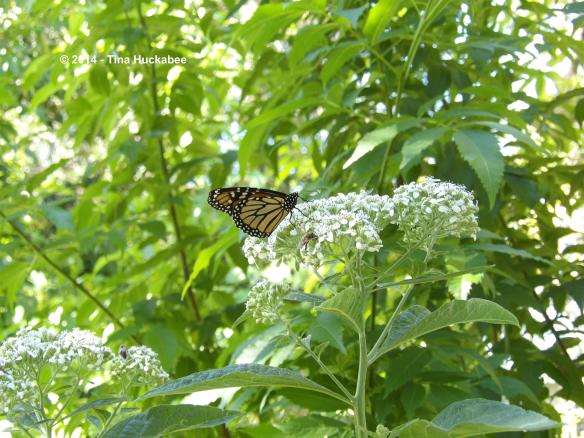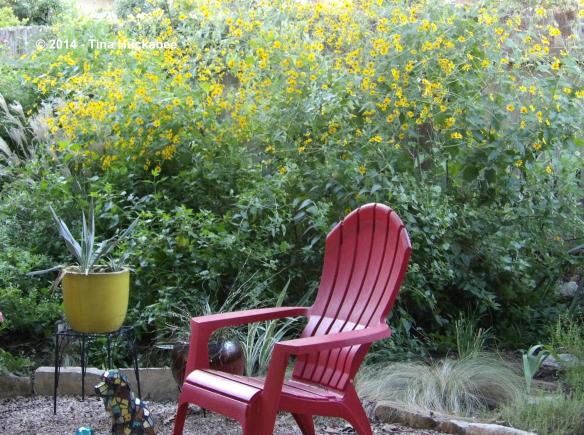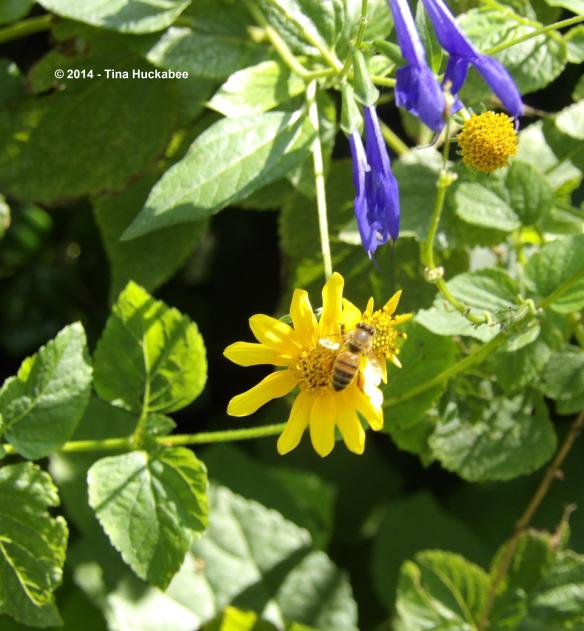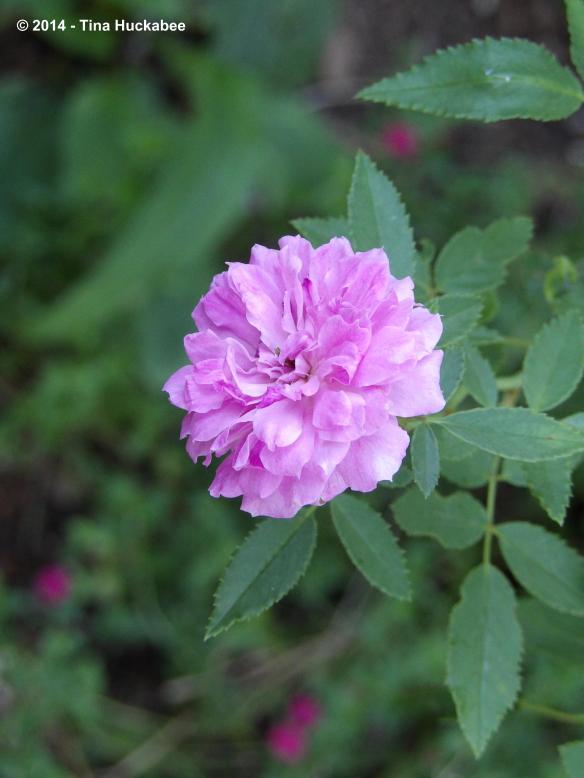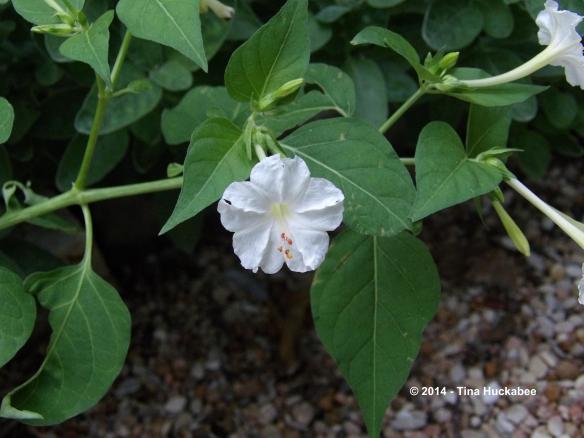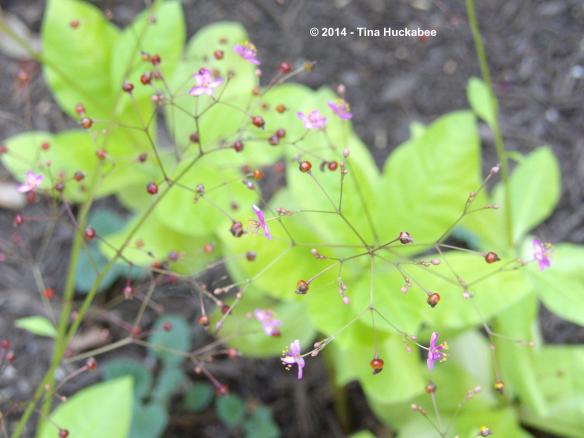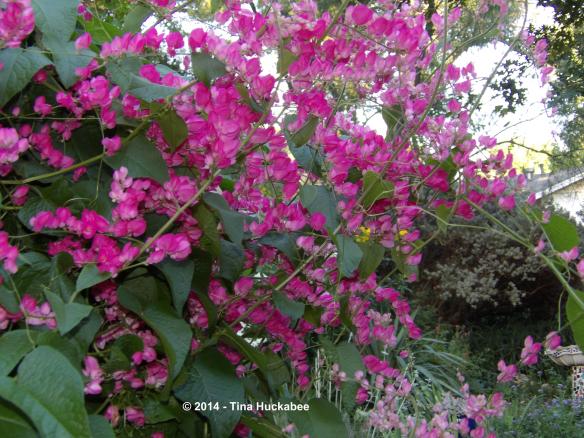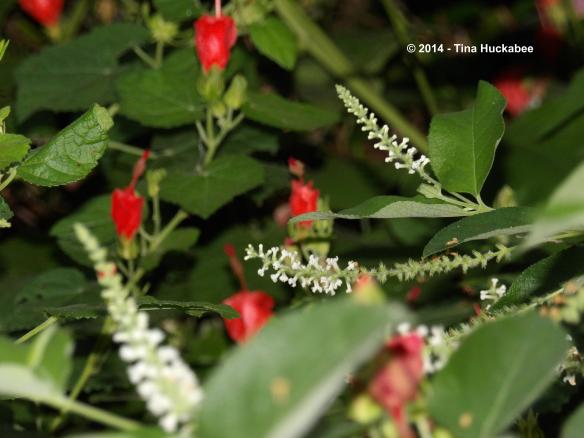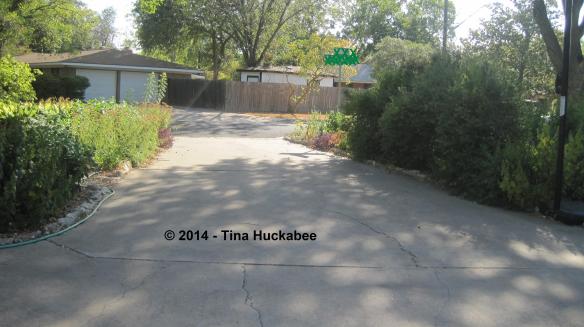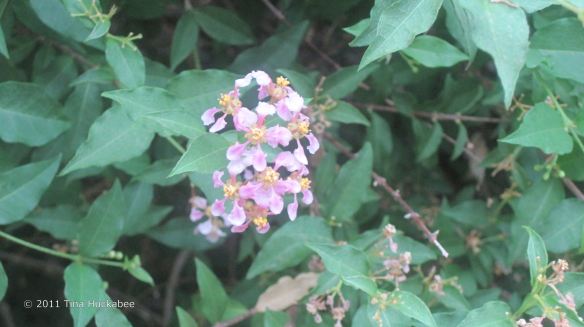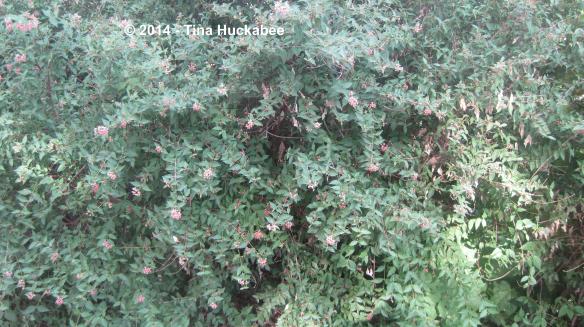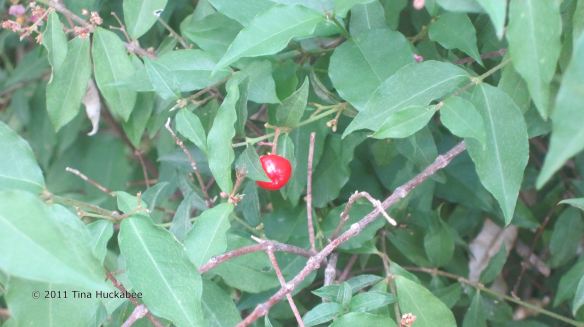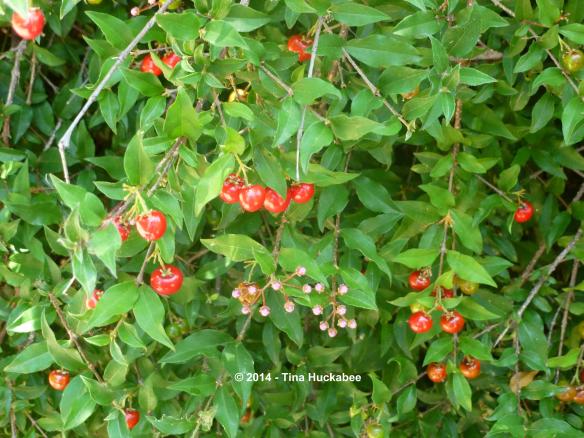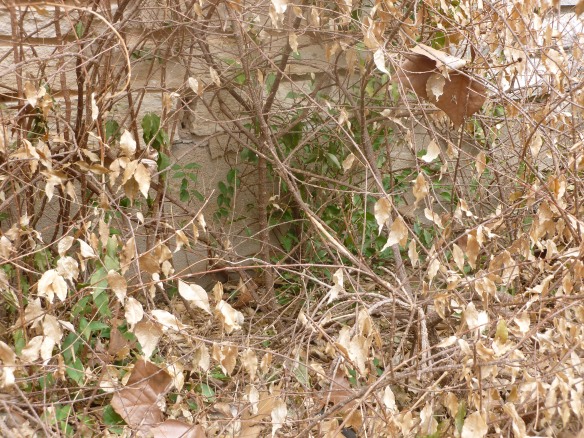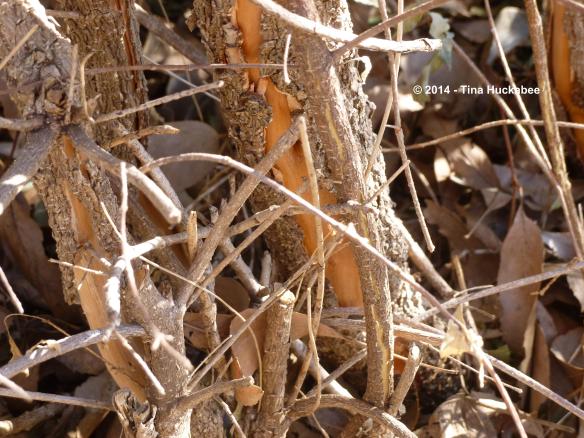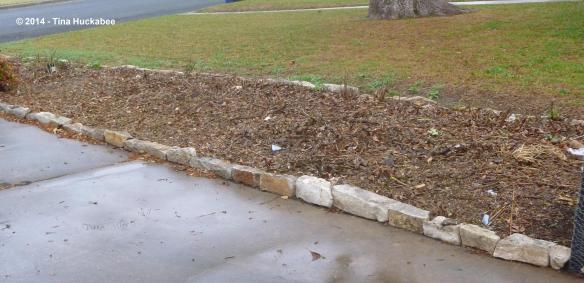Summer has been reluctant to release its toasty grip on us in Texas, but the cool of autumn has mostly arrived. We’ve enjoyed a couple of refreshing cold fronts, dropping our temperatures into the ’50’s, with highs in the 70’s and ’80’s. The lingering warmth of September and early October didn’t damper blooms in my gardens, though. Joining Carol at May Dreams Gardens, I’m celebrating blooming stuff on this 15th of October.
There is no shortage of blooming native Texas plants in my gardens. Let’s take a tour, shall we?
Barbados Cherry, Malpighia glabra, has blossomed its dainty, pink clusters for a month or so now.
Soon, cherry red fruits will replace blooms, feeding a whole different crop of critters. Barbados Cherry is lovely in tandem with Turk’s Cap, Malvaviscus arboreus.
A cultivar of the native red Turk’s Cap, the Pam’s Pink Turk’s Cap, Malvaviscus ‘Pam Puryear’, blooms as heartily as the red,
…but with softer pink swirls perched atop the long branches. In my gardens, the Pam’s Pink is planted with Frostweed, Verbesina virginica,
….and it’s a successful pairing. Frostweed is an excellent wildlife plant. Attracting butterflies, like this migrating Monarch,
…and bees,
…and this guy, a Tachinid fly,
…who you can see again on Wildlife Wednesday, a fun little wildlife gardening meme I host. The next Wildlife Wednesday is November 5th. Frostweed a stalwart native perennial; it’s drought hardy and works well in either shade or sun.
The Goldeneye, Viguiera dentata, is photogenic in the fall garden.
Another perennial which attracts its share of pollinators,
…these pretty yellow flowers evoke glorious autumn sunshine.
They work and play well with other natives in my gardens,
…like the Rock Rose, Pavonia lasiopetala and Barbados Cherry. And who doesn’t love the tried and true combination of yellow and blue?
This Goldeneye’s companion is the non-native Blue Anise Sage, Salvia guaranitica.
The roses in my gardens are awake again after the heat of summer. I grow only water–wise antique or cultivar roses in my gardens. If a rose can’t shrug off the heat and dry of the Texas summer, it’s out! The Martha Gonzales Rose is one such beast.
Named after a Navasota, Texas gardener, Martha Gonzales,
…this rose is beautiful, fragrant, and tough. Martha grows in USDA zones 7a to 10b so it it’s appropriate in a wide range of situations. If you only grow one rose, make it the Martha!
The Belinda’s Dream Rose, which is appropriate for USDA zones 5a to 10b,
is the quintessential elegant pink rose. Fragrant and downright luscious, Belinda isn’t quite as hardy as the Martha, but still performs well for me. Belinda gets a little peeky in summer, but picks up again with rain and softer temperatures. Caldwell Pink Rose,
looks dainty, but it’s no wilting beauty. This poor thing, I’ve moved it four times–I think I’ve finally found its forever home.
A migrating Monarch finds this Old Gay Hill Rose delightful,
…and so do I. Similar to the Martha Gonzales, the shrub is larger and the petals slightly (but only slightly) more pink than the Martha’s fire engine red petals.
I’m not a grow-only-native purest and host a number of non-native perennials in my gardens, like these Four O’Clocks, Mirabilis jalapa. Considered a staple of the Southern garden, these are new to my gardens and were gifted to me by a gardening friend, TexasDeb at austin agrodolce.
These lovely trumpets open late in the day, bloom all night, and close in the morning. Four O’clocks are fragrant and are such lovelies–I’m tickled to make room for them in my gardens.
Jewels of Opar, Talinum paniculatum, are another new-to-my-gardens perennial from TexasDeb. Jewels are also an old-fashioned flower of the Southern garden.
I love the teesny flowers, the “jewels” seeds, and chartreuse foliage. Both Four O’Clocks and Jewels of Opar are potentially invasive, so I’ll keep them in check–ripping out uninvited extras who crash my garden party!
It’s now that my Coral Vine, Antigonon leptopus, shines,
…or is that a sparkle? Whatever it is, the bees love this bloomer.
After each rain, the Almond Verbena, Aloysia virgata, flowers and its fragrance graces my garden. Shown here in partnership with Turk’s Cap blooms, the Almond Verbena is favored by honeybees.
My Almond Verbena is the anchor plant in a group of native shrubs and perennials.
It fits quite well, I think.
Quoting another garden blogging buddy, Debra of Under the Pecan Trees, we enjoy a “second spring” in Texas–a lush blooming autumn gift, after the heat, when all, including gardeners, perk up anew.
What’s blooming in your gardens this October Bloom Day? Check out May Dreams Gardens for blooms from everywhere.






